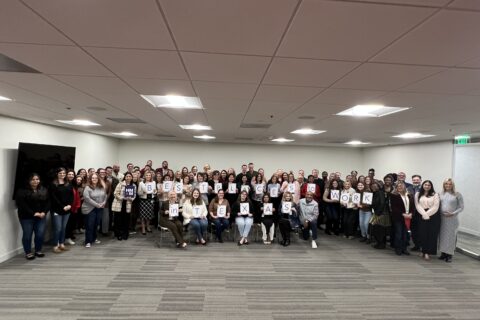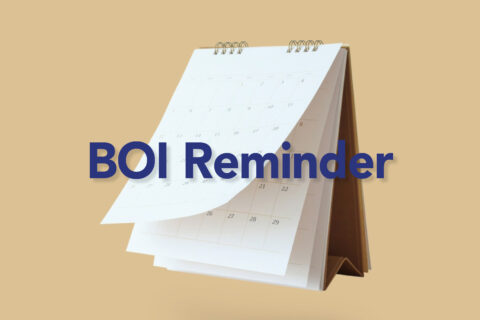The Take Away
The Paycheck Protection Program (“PPP”) is part of the hastily-drafted 880-page Coronavirus Aid, Relief and Economic Security Act (“CARES Act”), enacted March 27, 2020. The Federal government alleges that certain recipients of loans provided under the PPP were ineligible and possibly will be subject to criminal prosecution, if they do not return the money by May 7, 2020. We discuss the matter below. If you have borrowed money under the PPP, you may want to discuss this matter as soon as possible with your PPP lender so that you can act by May 7, if you deem it necessary. We suggest you read the following discussion first.
Overview of the PPP
The PPP is an emergency loan program administered by lenders approved by the Small Business Administration (“SBA”). The program initially provided $349 billion for loans. Applications could first be presented to the SBA by lenders on April 3. The funding was completely subscribed by April 16. $310 billion in additional funding was appropriated on April 24, 2020. As of May 3, news sources report that $145 billion remains in the PPP fund to be loaned. The U.S. Treasury Department is working with the SBA to administer the PPP.
In a nutshell, the PPP works like this.
- A small business (or a certain kind of not-for-profit organization) applies for a PPP loan in an amount equal to 2.5 months of total payroll costs (generally limited to $10,000,000).
- If, during an eight-week period following the funding of the loan, the borrower spends the funds on “qualified expenses,” the loan can be forgiven – tax free – by the SBA. The SBA and Treasury say that 75% of the expenditures must be spent on “total payroll costs.”
- To the extent that the loan is not forgiven, the borrower repays the money over a two-year period, with a 6-month deferral in monthly payments. The loan bears a 1 percent annual interest rate.
That explanation was summarized to the extreme. You can find out more about the PPP on our COVID-19 Resources Webpage.
The Critical Language
Section 1102 of the CARES Act adds the PPP to Section 7(a) of the Small Business Act. In part, Section 1102 provides that the borrower “shall make a good faith certification…that the uncertainty of current economic conditions makes necessary the loan request to support the ongoing operations of the eligible recipient [the borrower].”
A borrower applies for the PPP loan with the SBA by using SBA Form 2483. An applicant must certify on that form, among other matters, that ”[c]urrent economic uncertainty makes this loan request necessary to support the ongoing operations of the Applicant.”
The Uproar
As the first round of PPP lending wound down, some borrower identities began to emerge. The list included names that surprised a number of observers: a sampling of public companies, large private hospitality and restaurant entities, professional service firms, elite private schools, and the Los Angeles Lakers.
News media roundly criticized the loans to such borrowers. Both sides of the aisle in Congress loudly protested such loans. The administration went from being a rescuing hero of small businesses to a rapacious villain assisting money-grubbers.
The Blowback
Treasury Secretary Steven Mnuchin, a primary architect of the PPP, went on the offensive. To turn a sports saying into a political adage: “The best defense is a good offense.”
Secretary Mnuchin mounted his bully pulpit. He began to browbeat companies into returning the money. Some have.
About the same time, Treasury added to its PPP frequently asked questions and answers (“FAQs”) FAQ 31: “Do businesses owned by large companies with adequate sources of liquidity to support the business’s ongoing operations qualify for a PPP loan?” That’s a loaded question: What’s large? What’s adequate? What is a source of liquidity? Among other observations, FAQ 31 says: . . . it is unlikely that a public company with substantial market value and access to capital markets will be able to make the required certification in good faith . . .”
New FAQ 39 asks: Will SBA review individual PPP loan files? Answer: the SBA will review all loans in excess of $2 million. I counted about 5,000 of such loans. Good luck on finishing those reviews anytime soon.
One Man’s Opinion
Some big companies, by following the rules in the statute, got access to the small business loan program. These businesses and their industry associations have good lobbyists. Legislators have no one to blame but themselves (and maybe their staffs). I did not see evidence of the administration complaining about company qualifications before the law was enacted and criticism mounted.
The CARES Act has lots of incongruities and ambiguities. It is a rescue package that was thrown together in short order without normal review and reflection. I am not criticizing. However, mistakes in law are corrected by law, not by strong-arming and FAQs, the latter of which have only the slightest authoritative weight.
The implication that public companies, by definition, have a veritable fountain of capital sources is just plain wrong. Once upon a time, I was the CEO of a company traded on the NASDAQ. We lost a big customer which was a strategic partner. We saw it coming for several quarters, so we horded our liquidity and planned for a slowdown. When the divorce happened, we couldn’t borrow or raise equity capital. I daresay we had it easy compared to businesses walloped by COVID-19. And that “easy” was really hard.
So…
So, out of an abundance of caution, if you want to stay completely out of harm’s way and think your company can weather the storm without the PPP, you might work with your lender to return the money by May 7.
But, if your outlook is as foggy as that for most businesses, other than makers of toilet paper and sanitizers, you might want to hang onto your PPP loan “to support the ongoing operations of the eligible recipient.” Spend it carefully for the right reasons, and document carefully the trials, tribulations, challenges and risks that you face. Qualitatively and quantitatively test your business model.
Stay safe. Stand tall.
For more information check out HM&M’s COVID-19 Resources page.
HM&M COVID-19 ResourcesLatest Blog
DALLAS, TX – [February 21, 2025] –HM&M, a leading accounting and advisory firm, is proud to announce that ...
Updated February 14, 2025 A complex trust or estate may make an election under Internal Revenue Code Section ...
As this reminder was going to press, a Texas-based federal court issued a preliminary injunction prohibiting the federal ...
HM&M Updates
DALLAS, Dec. 11, 2024 – Springline Advisory, a trailblazing financial and business advisory firm, is proud to announce its partnership ...
Last month, Senior Manager, Pearl Balsara was invited to speak at the 2023 FPA DFW Annual Conference in ...
We are pleased to announce the winners of the 2022 HM&M Excellence Awards. Ronna Beemer, Keith Phillips, and ...









